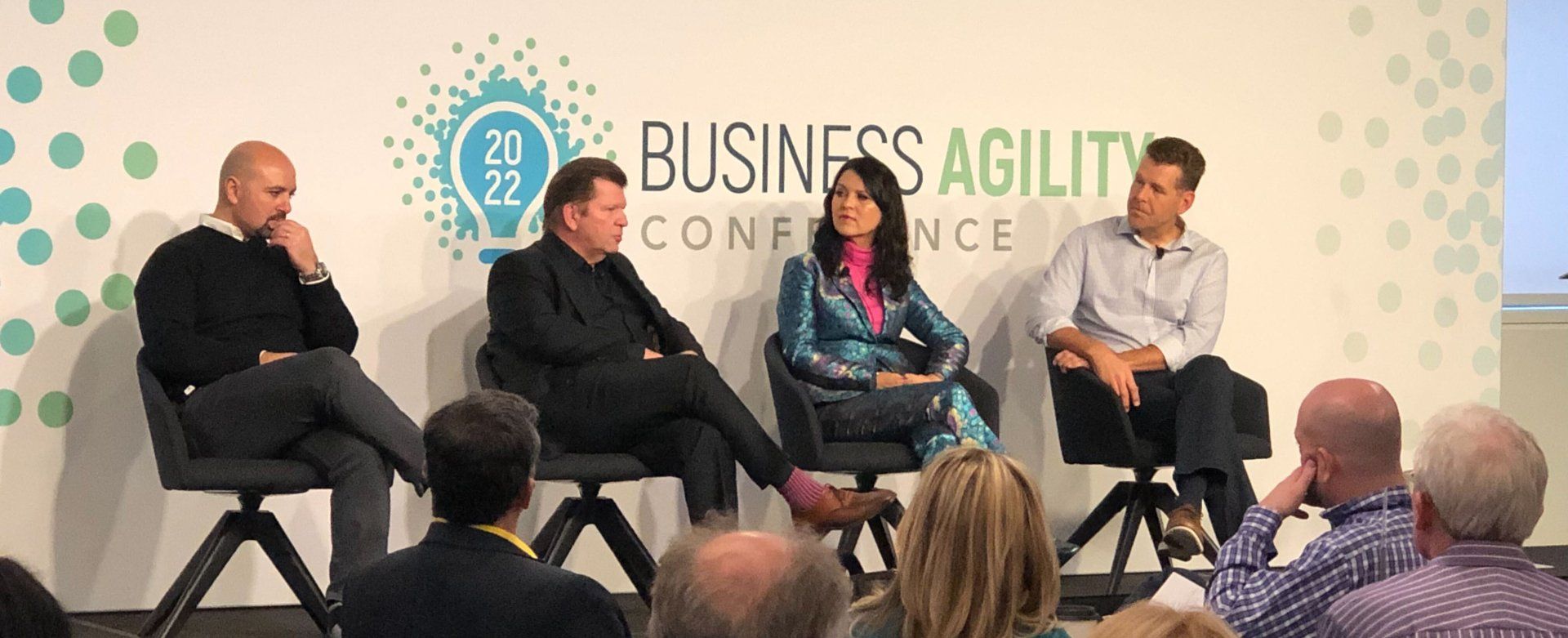Takeaways from the 2022 Business Agility Conference
As my first return to the in-person conference scene since the pandemic, what did I learn?
I believe the best description of the feeling of returning to an in-person conference was that of a fish out of water. I have been living in my fishbowl for 2 years, with only a small screen (via Zoom) to see and connect with the outside world. This week was my first return to a mass gathering without masks and I have to admit that it was a challenge to overcome the feelings of angst, even as I was excited about connecting and reconnecting with my global colleagues.

Why did I attend the Business Agility Conference?
For the past three years, Amerisure Insurance has been on a transformation journey to shape their culture in order to improve their speed of innovation. We chose the Business Agility Conference to share their case study and how Agile Leadership Journey educated, inspired and empowered their leaders to guide their transformation from the inside-out. Amjed Al-Zoubi, the CIO of Amerisure, and I presented their 3-year culture-shaping journey including the challenges and positive impacts it has made in delivering more innovation across the entire insuretech framework.
How did it feel to be at the conference?
There were three overwhelming positive feelings from attending the in-person event.
Connections!
Even as an introvert, where my energy comes mostly from time alone, I find that COVID has taken its toll and meeting people without masks has been a warm welcome! I was honored to see and reconnect to so many familiar faces in our business and leadership agility community.
There is only so much that can be accomplished in the lo-fi engagement model via email, chat and video. Nothing replaces being with a whole person in-person and connecting with people in our community I had never met before and would likely have never met in any other form.
Energy!
There is an energy when people gather in-person that is not felt in online gatherings. While I have participated in dozens of remote gatherings during COVID, those all felt very flat and one-dimensional, even with virtual breakout rooms and various engagement forums. The energy in this shared room, side tables, discussions, random meetups, and more is just not replaceable online (at least not yet).
I look forward to more in-person events as the pandemic continues to wane. I will be joining the Global Scrum Gathering in Denver, Colorado in June to share what we are (Re)Learning in Leadership. For this talk, I will be highlighting stories from our (Re)Learning Leadership podcast.
What did I relearn from the conference?
There were two key themes that reconnected for me in terms of developing more business agility.
Leadership!
If there was one takeaway connecting most of the sessions, it was the need for leadership agility to achieve business agility. The Business Agility Institute introduced an assessment they have developed to measure the progress of business agility within an organization. The Business Agility Profile™ provides an independent, detailed snapshot of business agility capabilities and behaviors across an organization. Not surprisingly, 60% of the behaviors the assessment measures are leadership behaviors. Of course, the rest of the behaviors are highly influenced by leadership.
A couple of the sessions I found most interesting were from Nadya Ichinomiya and Dr. Ulrich Lagas. Nadya shared the Servant Leadership Journey she facilitated at Sony Pictures to drive leadership behavior changes. Ulrich shared their big bang destructuring into a self-organized organization where the leadership hierarchy was eliminated to enable self-organizing teams to drive value.
Culture!
If there was a second takeaway connecting virtually all of the sessions, it was the inter-dependency between business agility and organizational culture that either enables or impedes it. Edgar Schein, a dominant culture expert and highlighted by one of the thought leader talks from Dr. Annika Steiber, illustrates the relationship between leadership and culture as two sides of the same coin. If Business Agility is an outcome that organizations achieve amidst VUCA, a culture of agility is the enabling ingredient fostering it.
While we could trace to culture in virtually every talk, the ones that stood out most to me were Matt Spruce’s talk from the Battlefield to Business discussing the culture for self-organization and empowered decision making, and Jason Yip’s talk on The Top 3 Points You Should Have Paid Attention to in the Spotify Engineering Culture Videos where he sought to reset the common misperceptions of Spotify’s culture and what change agents should be looking at to help drive business agility.
Final thoughts
The Business Agility Institute is a partner organization of ALJ. In addition to attending as a presenter, we were proud to be a sponsor. I want to extend a special kudos to the event team, including Evan, Laura & Ahmed & team. Planning this event began with the intention of being fully in person, but given the ever-changing environment with COVID concerns, had to adapt to enable a hybrid format for this conference. I know that was no easy feat, but it was a demonstration in how important business agility is in today's world.
Lastly, I'm excited to announce that I'll be contributing a regular column to Emergence, the Business Agility Institute quarterly publication. Emergence features voices from all over the globe sharing insights and wisdom on business agility. Subscribe to Emergence
Photos courtesy
Laura Powers, who is the COO at Business Agility Institute and an
ALJ Guide.






